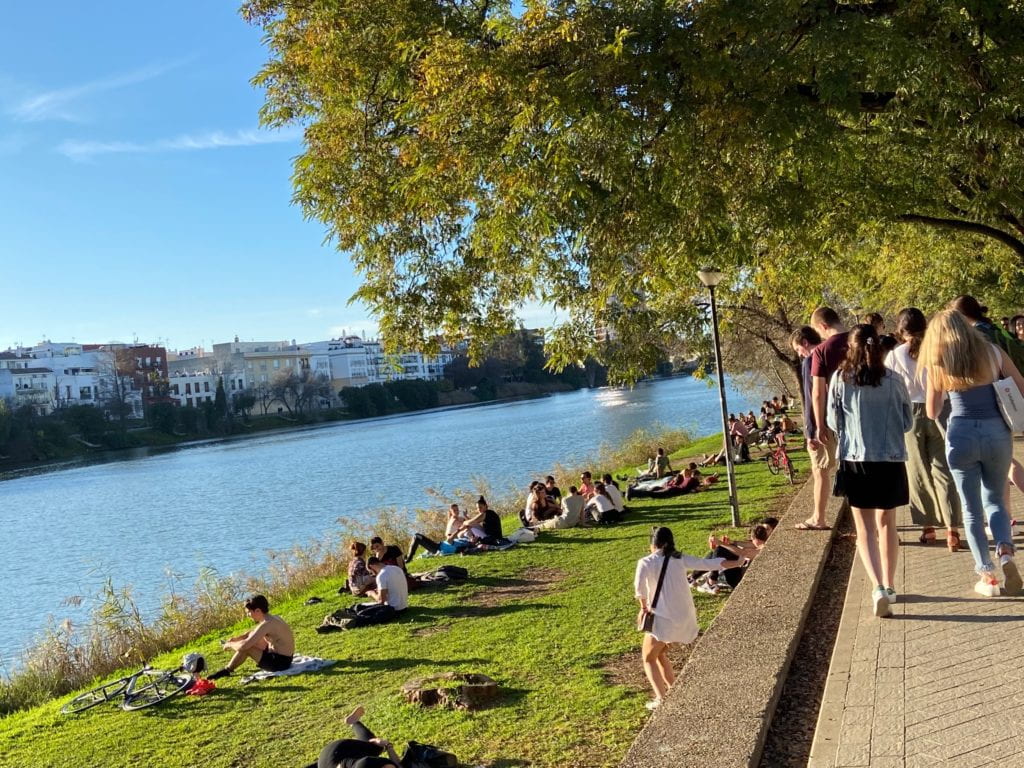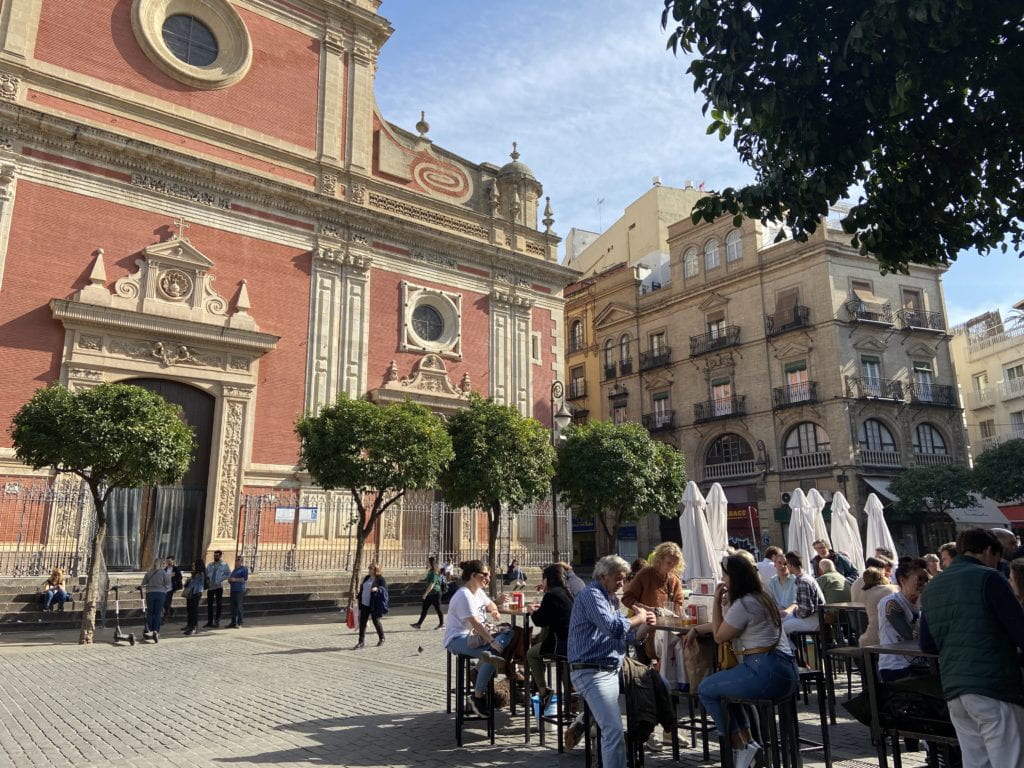First Impressions of Seville
Last semester, when I told people that I would be spending the spring in Sevilla, everyone, from make-up artists at Sephora to old family friends, responded exclusively in superlatives. Before I set foot in Spain, I was prepared to find myself in a city with the best festivals, flamenco, architecture, and Spanish tortilla. A city full of uniquely open and expressive people possessing a singular desire to spend time in one another’s company. After five semesters of half-heartedly attending Jenkins parties and hanging out with friends under the fluorescent lights of Frost Library, I was looking forward to going abroad.
These stories continued after I arrived in the indisputably picturesque city. On the first day, one of the host mothers told a kid in my orientation group that here in Sevilla, people live to enjoy life, to drink, eat, and spend time with one another. It did not take long for the culture of play to reveal itself to me. One of the public spaces I walk past on my way to school, Plaza Del Salvador, is known for being sunny at all times of day. I have yet to pass by without seeing the high-top tables filled with people, chatter and laughter emanating. On the few days it has rained, a stoic crew persists underneath umbrellas.
The Guadalquivir river, which bisects Sevilla and runs past my apartment building, was one of my favorite places to walk the first few days. On one particularly sunny Thursday afternoon, I found myself sitting by the river with nearly all of the grass around me occupied. As far as I could tell, the whole world was caught up in enjoying that precise moment. Some people were engaged in activities; passing soccer balls, eating informal picnics, and dancing to music coming out of multiple different speakers. But mainly I saw people lounging on blankets, doing absolutely nothing. Even the people passing by lacked a sense of urgency; few were exercising, none commuting. Although the Guadalquivir divides the neighborhoods, the surrounding areas are profound spaces of reunion for all kinds of people.
I witnessed all of the things that I had been prepped for, but for the first few weeks, my own experiences did not mirror this vibrant lifestyle. Before finding my own community and routine in Sevilla, I spent a fair amount of my unscheduled time inside or exploring the city by myself. At Amherst, spending time alone and being inside are hardly unusual activities, but they took on a very different quality in Spain. My time outside was spent observing a way of life that I was not yet accustomed to nor a part of, while my time indoors came with its own challenges and unexpected adjustments.
When I arrived the open-air festivities were enticing, but I soon became aware of myself on the outside of them. On my second trip to the river, I sat reading happily in the sun when I was interrupted by a group of local students taking a photography class. The Spanish kids asked if they could take photos of me. Sure, I said, ¿Por qué no? For the next ninety seconds I was unable to continue reading, caught up in a self-conscious realization that by sitting alone I had distinguished myself from the rest of the riverside community.
During orientation, I was drawn to the commotion and excitement at Plaza del Salvador every time I walked past. But I hesitated, aware that with boot-cut jeans on and a backpack slung over my shoulder, I would stick out like a sore thumb in a bar that was so popular among locals. Instead of standing outside, snacking on tapas, I found myself opting for a smoothie to-go from a cafe down the street, a spot that caters to tourists and study-abroad students.
In Sevilla, the home serves as a compliment to the vibrant lives which play out in the streets. They are distinct from homes in the states, and likewise, have their own set of customs and to adjust to. I quickly learned that adjustments would have to be made. The houses here are cold, the meals late, and showers are short. While these all seemed like pure inconveniences when I first arrived (my jet-lagged self felt personally attacked by the shower restrictions), as I learned more about the culture and context of Sevilla—almost every day in sunny, therefore water is precious—these norms began to make sense. But this process was neither easy nor instantaneous.
I was startled my first night when I found myself shivering next to a heater, holding the table cloth in my lap as a blanket, eating a dinner that consisted of a plain egg omelet with cup a broth on the side and a customary loaf of bread. Over the next few days I learned that the dinner was simple and late because in Spain, lunch is the most important meal of the day and it is not served until 2:30 or 3pm. At lunch time I am served an array of wonderful dishes, which frequently take my host mom much of the morning to prepare. Kitchen smells (both new and familiar) waft through the small apartment as she cooks.
Because Sevilla is hot so much of the year, the homes have very little insulation and the floors are uncarpeted and cold to the touch. I have found that wearing layers and slippers inside and turning the small heater on when I return home are both easy ways to ward off a chill—certainly worth the warm sunny days which have already begun to arrive.
As February speeds along and crisp days transition into Spring, I have begun to find comfort in new routines. The grass along the river has been adopted as a meeting point for my group of friends, the plazas and bars become more approachable every day as my comfort with Spanish improves, and perhaps most remarkably, I haven’t asked my host mom to make lunch before 2pm in over a week.
Although the transition was not all orange trees and tapas, everyday Sevilla feels more like home. I think there is something particular about working to feel a part of a community or the fabric of a city that makes the experience even more special (if tiring). As my understanding of social life evolves and my own experiences multiply, I look forward to elaborating on how specific norms and traditions, such as tapas and plazas, impact daily life in Andalusia.

